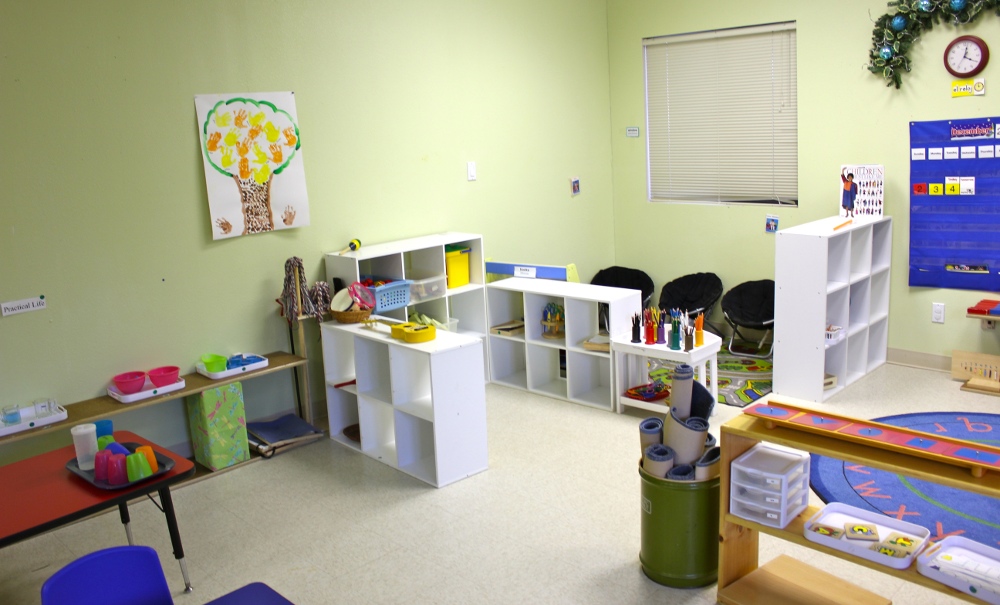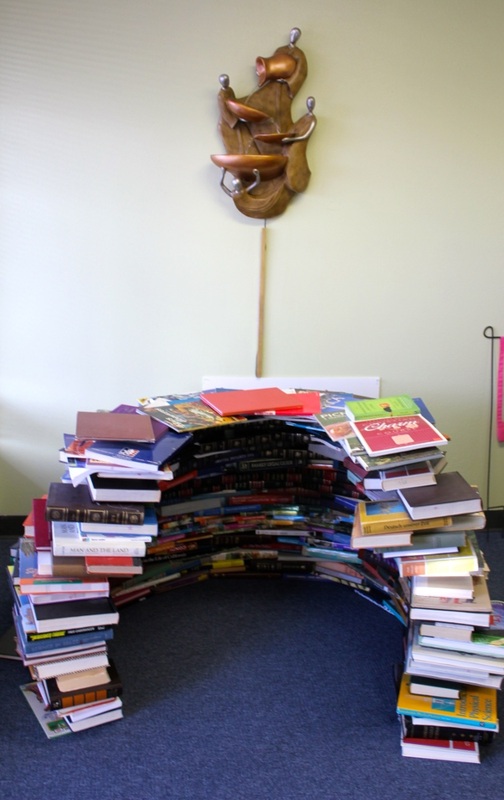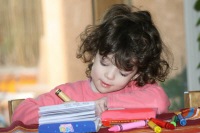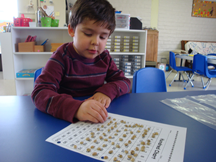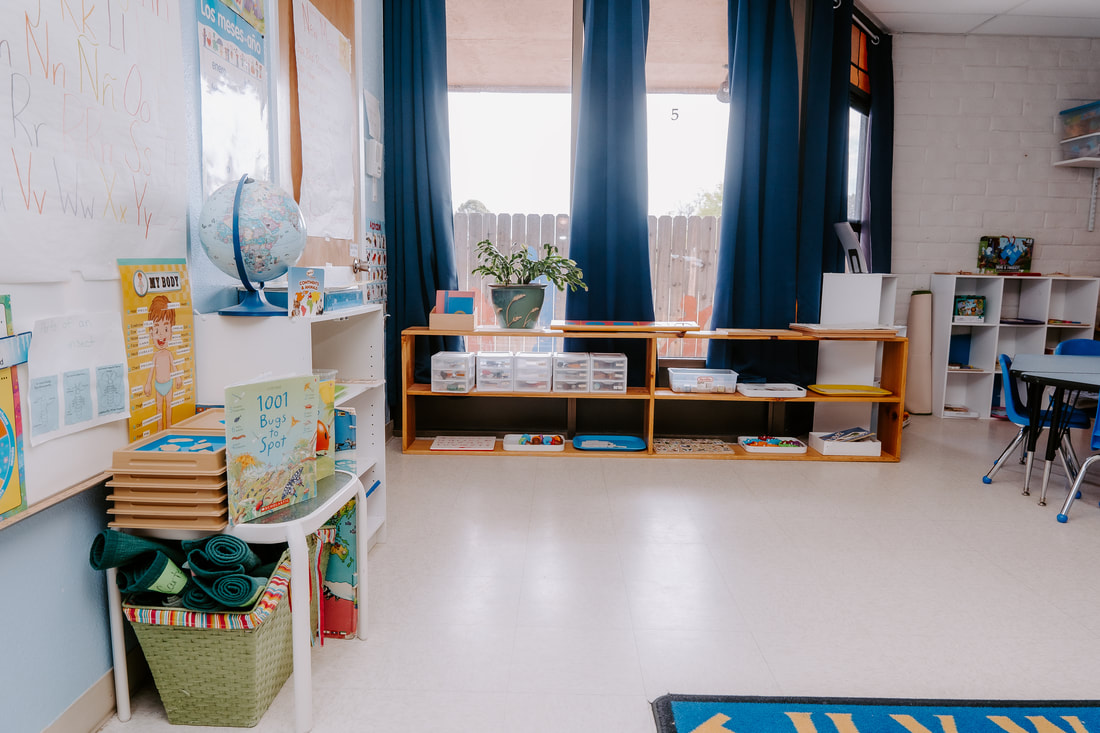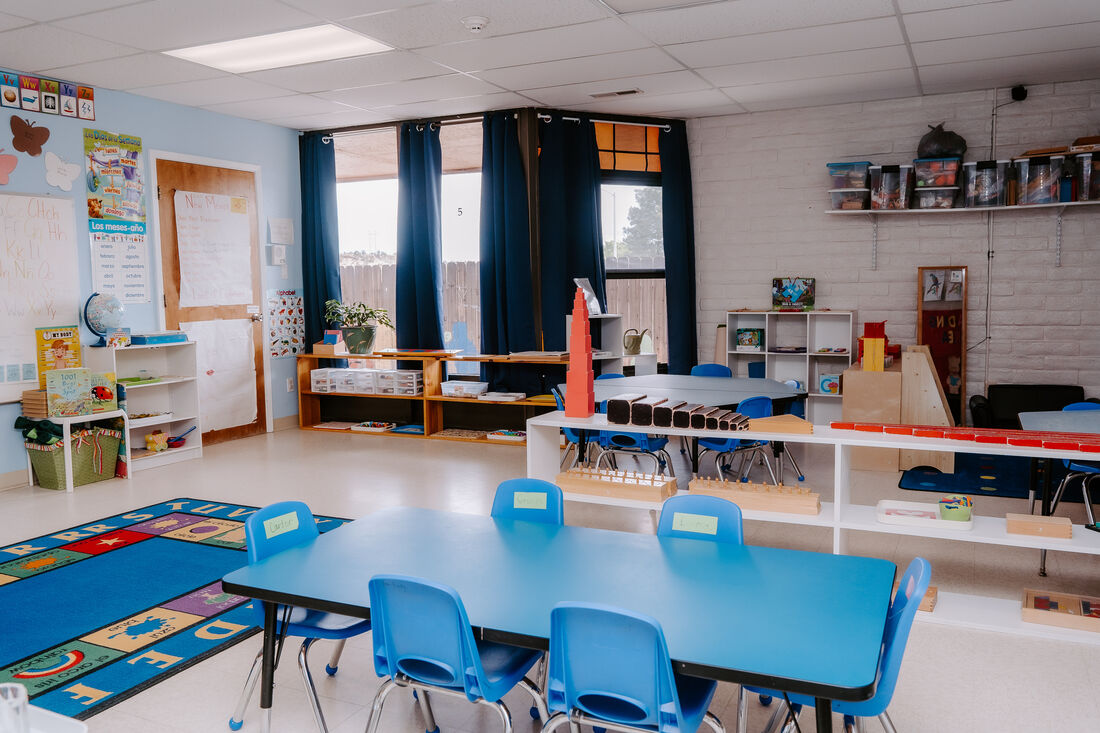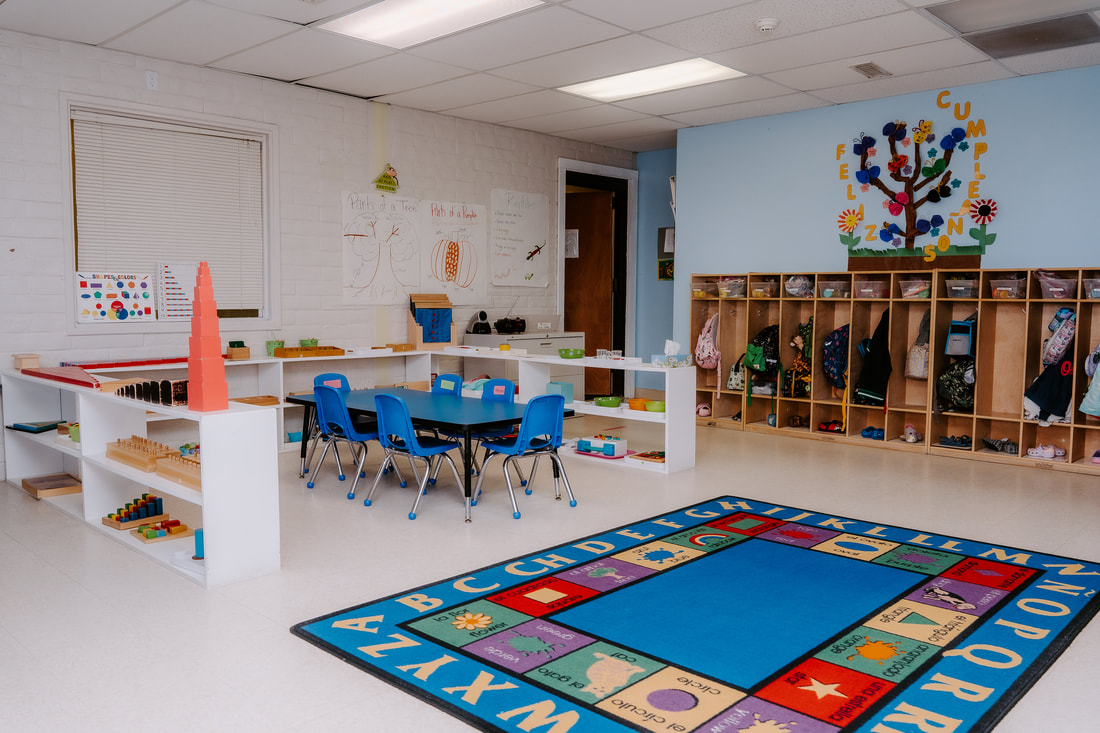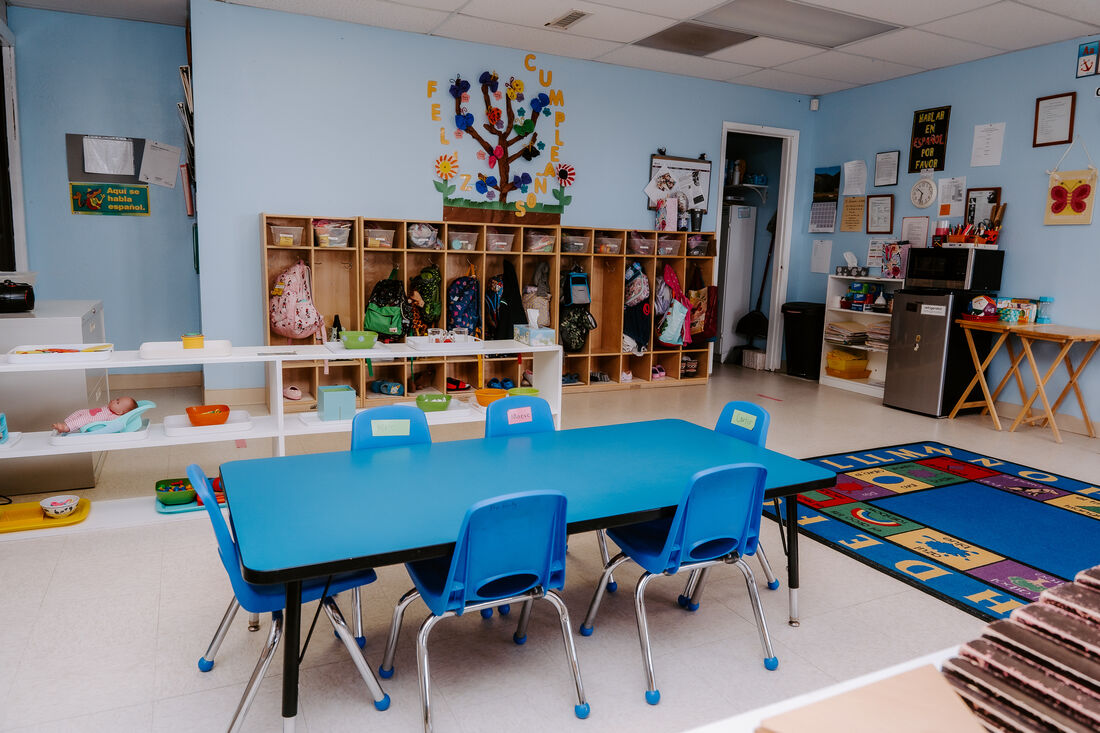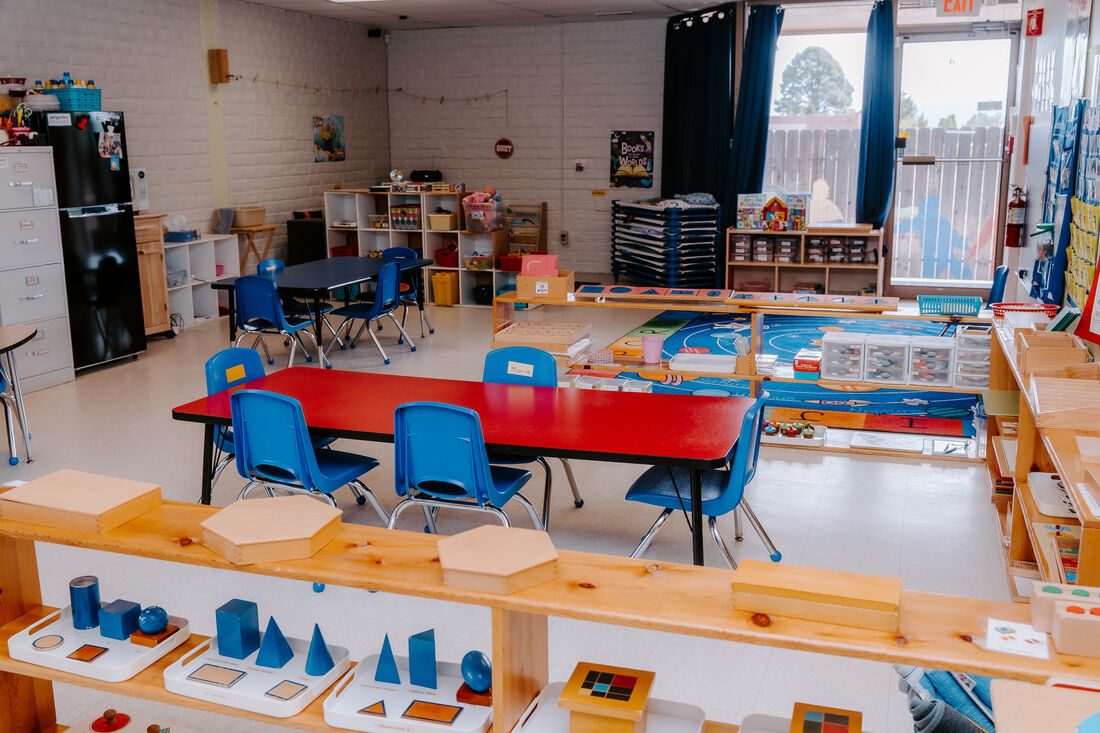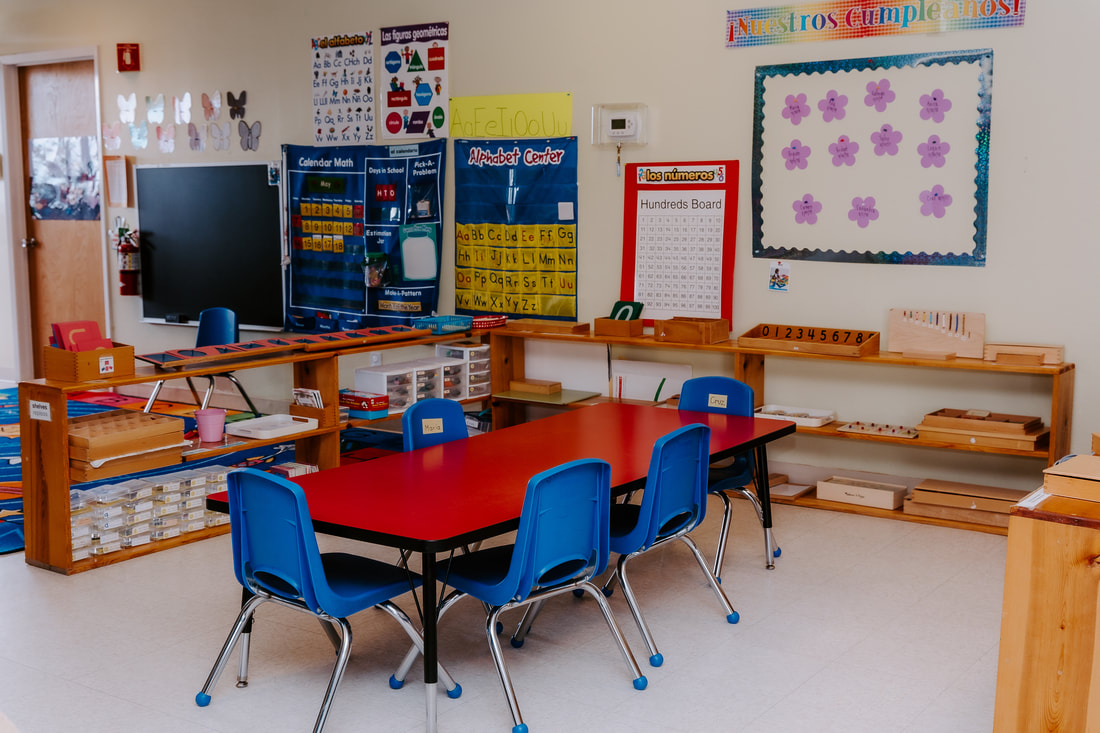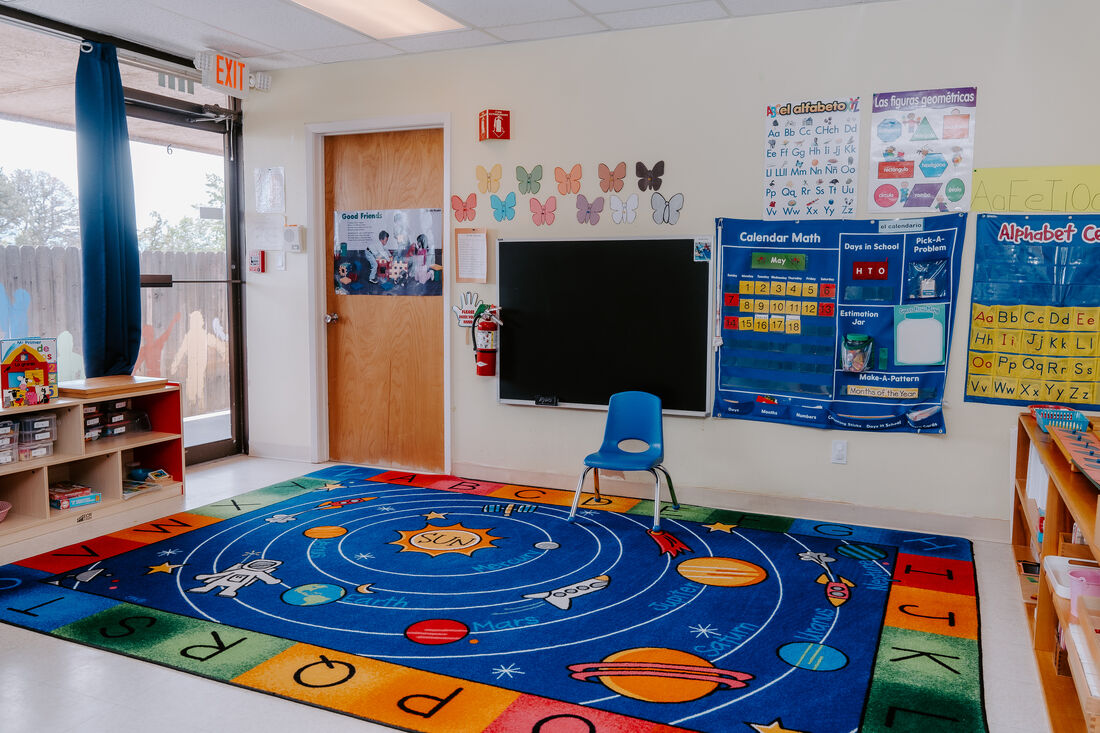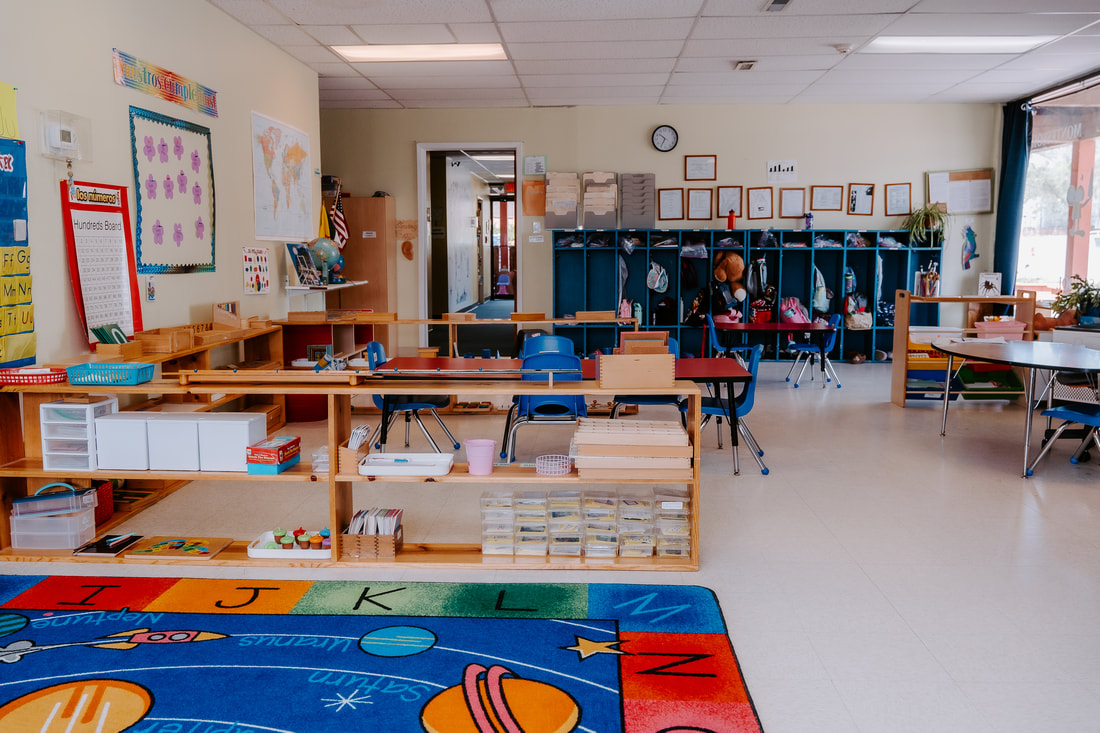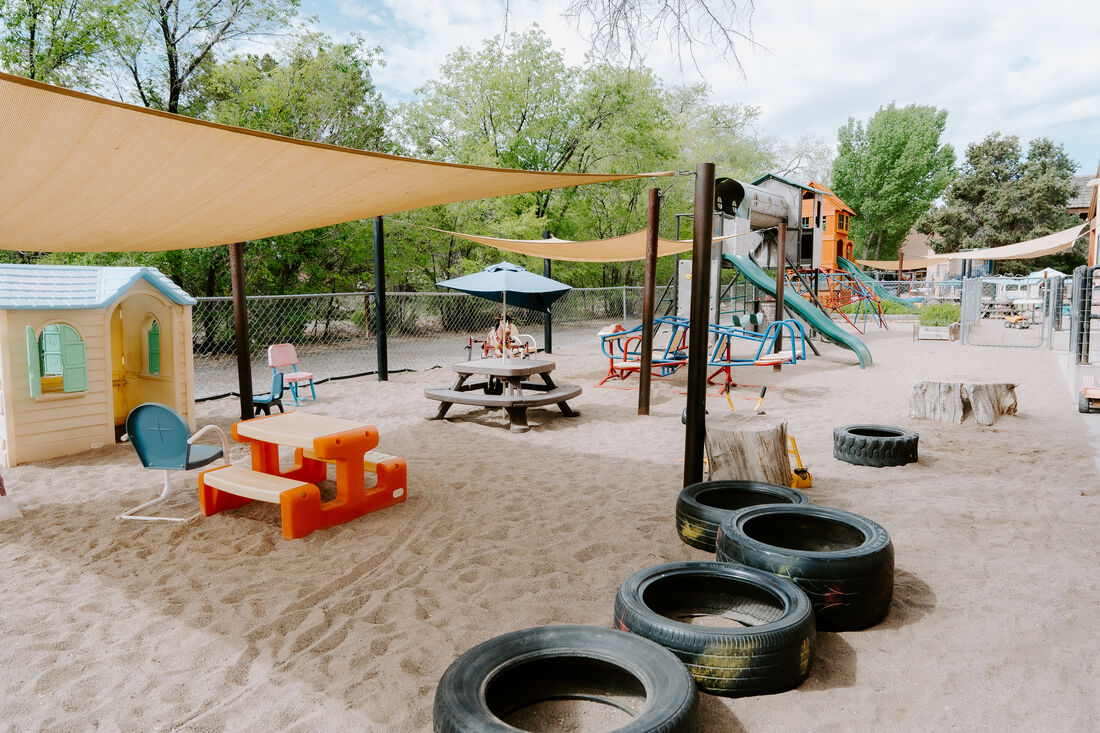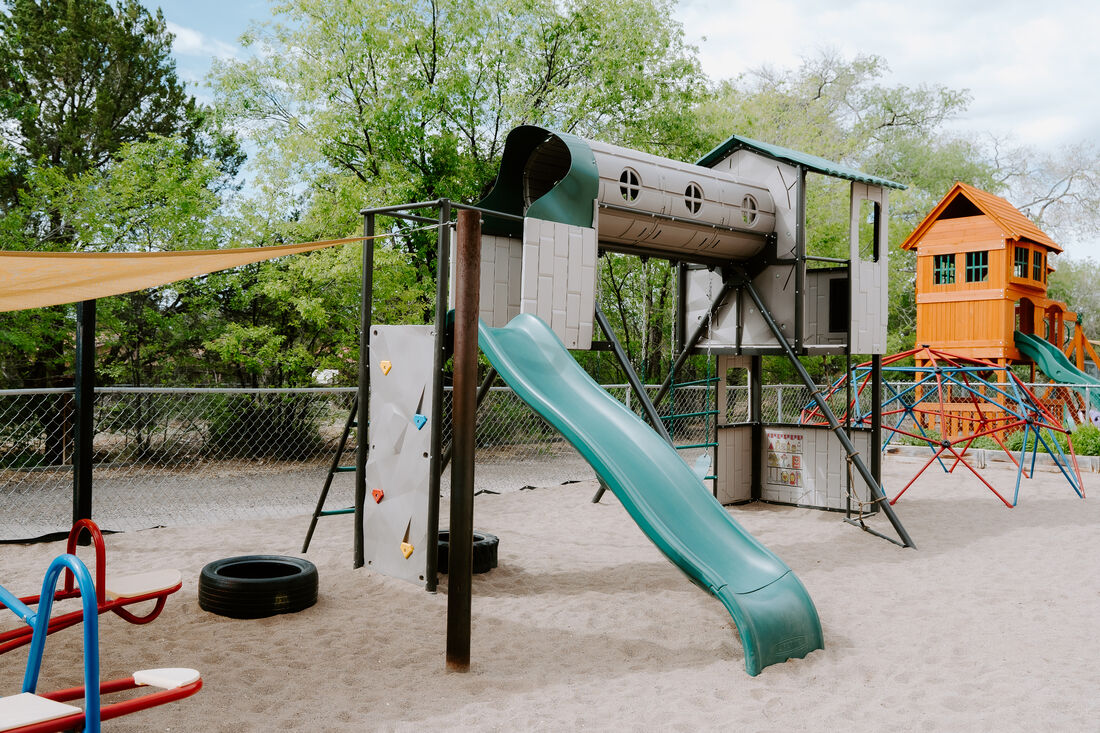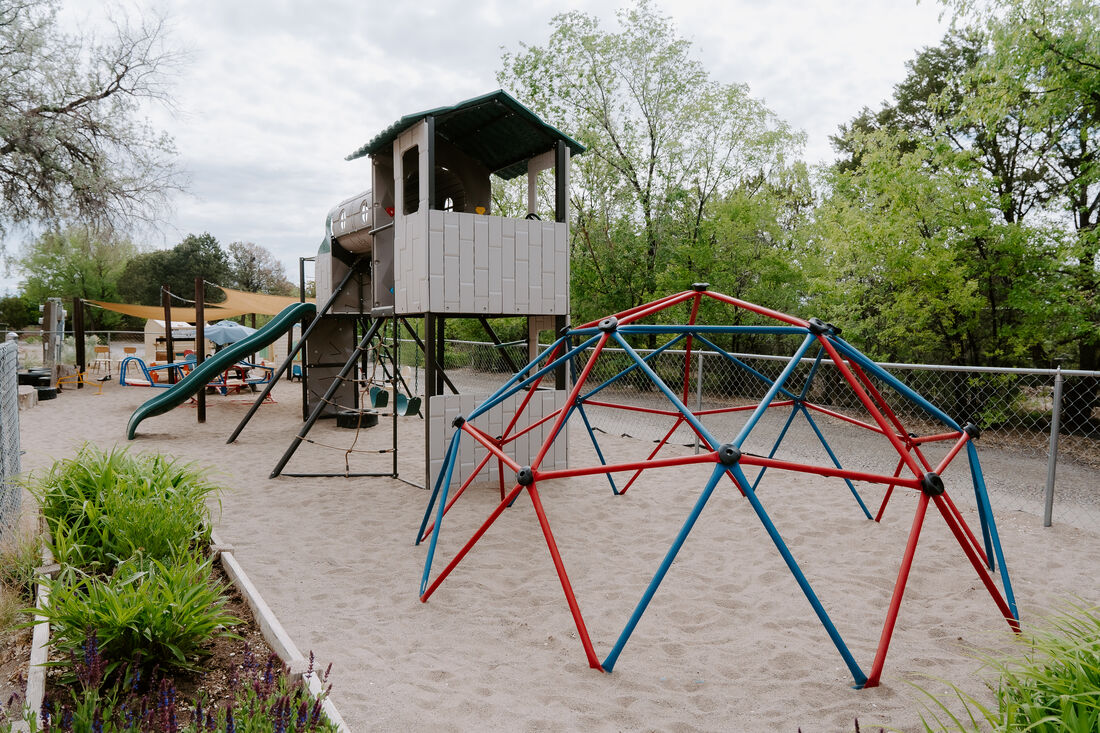Pre-school skills taughtSocial
|
Pre-kindergarten skills taughtSocial
|
The Curriculum in depth:
The Pre-Early/Early Childhood curriculum of a Montessori school has four basic components, which include practical life, sensorial learning, language, and math. In addition to this, there are cultural extensions consisting of geography, history, botany, zoology, and the arts. Music and movement are also included in the curriculum.
Practical Life
A basic component of the Montessori curriculum is practical life. This continues throughout the child’s school years, but begins at a basic level during the primary years. Children learn skills such as cleaning tables, putting objects back on a shelf where they belong, and more importantly, how to care for themselves. They are taught how to make their own snacks when they get hungry, how to dress and clean themselves, and how to care for their environment. Many aspects of practical life also help with the development of eye-hand coordination. For example, children learn, through trial and error, how to pour liquid from one object into another without spilling. One important thing to remember about Montessori is that all levels of learning begin with the concrete and move to the abstract. Children learn better when they can feel and see something, literally grasping it to obtain an understanding of how it works. This is applied from practical life to sensorial learning to mathematics and everything else.
Sensorial learning
Sensorial learning is another area of Montessori education that is unique. “The sensorial curriculum is designed to help the child focus his/her attention more carefully on the physical world, exploring with each of his/her senses the subtle variations in the properties of objects.” In other words, children learn to pay more attention to their world through their senses. The jobs that help children to accomplish this include the pink tower, the brown stair, the red rods, the cylinder blocks, knobless cylinders, sandpaper tablets, thermic (temperature) tablets and jars, baric (weight) tablets, smelling bottles, and sound boxes, to name just a few. All these jobs start simply and move towards more complex understanding in a way that encourages the child and enhances his/her natural creativity and curiosity. In addition to this, “all the sensorial materials lead into vocabulary lessons and language. For example, the child working with the tower of cubes masters the terms smaller, smallest, larger and largest, heavier, heaviest, lighter, and lightest.”
Language
While many children do not begin to learn the fundamentals of reading until they enter grade school, Montessori children begin to learn as soon as they show an interest - no matter what the age. The Montessori environment is saturated with opportunities for children to enhance this interest. Sandpaper letters, the movable alphabet, metal insets, verbal command cards, command cards, and exceptional children’s literature all have most Montessori children reading very well by the time they enter first grade. A love of reading is a major component of the Montessori educational system, and children are not only encouraged to do so, even if they don’t know the words, but are surrounded by students and teachers alike who thoroughly enjoy a good book. Inclusive in their reading education is their writing education, for it is much easier for one to learn how to read if one is also encouraged to write or draw their thoughts, ideas, and feelings at the same time.
The changing child
The 3-6 year old goes through an intense period of change, including the transition to cooperative play and more complex social interactions, a language explosion leading to beginning skills in writing and reading, the emergence of number sense and the foundations of math, and great changes in physical development. The Montessori teacher responds to these changes in social and emotional, cognitive, and physical development with appropriate lessons to support each child’s growth and emerging capabilities.
Pre-Early/Early Childhood children learn by doing. The classroom, where everything is just their size, is full of beautiful things. The concrete materials let children explore the world through their senses, through touch and motion, and by observing and engaging with others. Teachers guide students through the curriculum as children are ready for each new challenge, introducing lessons and then letting children practice what they have learned. As children grow, the classroom materials grow with them in the sense that older children use the materials to explore curriculum in new and deeper ways.
The Pre-Early/Early Childhood curriculum of a Montessori school has four basic components, which include practical life, sensorial learning, language, and math. In addition to this, there are cultural extensions consisting of geography, history, botany, zoology, and the arts. Music and movement are also included in the curriculum.
Practical Life
A basic component of the Montessori curriculum is practical life. This continues throughout the child’s school years, but begins at a basic level during the primary years. Children learn skills such as cleaning tables, putting objects back on a shelf where they belong, and more importantly, how to care for themselves. They are taught how to make their own snacks when they get hungry, how to dress and clean themselves, and how to care for their environment. Many aspects of practical life also help with the development of eye-hand coordination. For example, children learn, through trial and error, how to pour liquid from one object into another without spilling. One important thing to remember about Montessori is that all levels of learning begin with the concrete and move to the abstract. Children learn better when they can feel and see something, literally grasping it to obtain an understanding of how it works. This is applied from practical life to sensorial learning to mathematics and everything else.
Sensorial learning
Sensorial learning is another area of Montessori education that is unique. “The sensorial curriculum is designed to help the child focus his/her attention more carefully on the physical world, exploring with each of his/her senses the subtle variations in the properties of objects.” In other words, children learn to pay more attention to their world through their senses. The jobs that help children to accomplish this include the pink tower, the brown stair, the red rods, the cylinder blocks, knobless cylinders, sandpaper tablets, thermic (temperature) tablets and jars, baric (weight) tablets, smelling bottles, and sound boxes, to name just a few. All these jobs start simply and move towards more complex understanding in a way that encourages the child and enhances his/her natural creativity and curiosity. In addition to this, “all the sensorial materials lead into vocabulary lessons and language. For example, the child working with the tower of cubes masters the terms smaller, smallest, larger and largest, heavier, heaviest, lighter, and lightest.”
Language
While many children do not begin to learn the fundamentals of reading until they enter grade school, Montessori children begin to learn as soon as they show an interest - no matter what the age. The Montessori environment is saturated with opportunities for children to enhance this interest. Sandpaper letters, the movable alphabet, metal insets, verbal command cards, command cards, and exceptional children’s literature all have most Montessori children reading very well by the time they enter first grade. A love of reading is a major component of the Montessori educational system, and children are not only encouraged to do so, even if they don’t know the words, but are surrounded by students and teachers alike who thoroughly enjoy a good book. Inclusive in their reading education is their writing education, for it is much easier for one to learn how to read if one is also encouraged to write or draw their thoughts, ideas, and feelings at the same time.
The changing child
The 3-6 year old goes through an intense period of change, including the transition to cooperative play and more complex social interactions, a language explosion leading to beginning skills in writing and reading, the emergence of number sense and the foundations of math, and great changes in physical development. The Montessori teacher responds to these changes in social and emotional, cognitive, and physical development with appropriate lessons to support each child’s growth and emerging capabilities.
Pre-Early/Early Childhood children learn by doing. The classroom, where everything is just their size, is full of beautiful things. The concrete materials let children explore the world through their senses, through touch and motion, and by observing and engaging with others. Teachers guide students through the curriculum as children are ready for each new challenge, introducing lessons and then letting children practice what they have learned. As children grow, the classroom materials grow with them in the sense that older children use the materials to explore curriculum in new and deeper ways.
